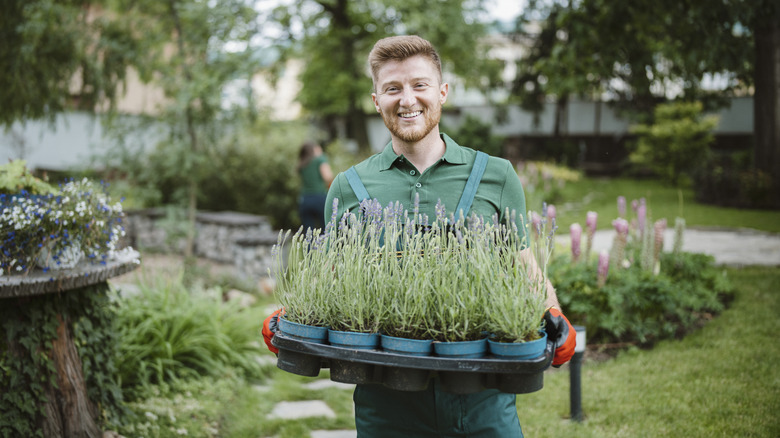Fill Your Garden With Free Lavender Using This Simple Propagation Technique
No herb garden is complete without the fragrant flowers of the lavender plant. Lavender is a popular perennial plant that grows like a bush. The most commonly planted lavender type is the English lavender, called Lavandula angustifolia –- formerly known as L. officinalis — but you can also grow other varieties, like Spanish lavender and French lavender. English lavender is hardy to USDA zone 5 and is much more cold tolerant than its Spanish and French counterparts that are only winter-hardy in USDA zones 7 to 9.
The only thing more exciting than picking the variety of lavender you want to plant is the fact that you can get more of it for free with a simple propagation method called layering. Layering is a type of asexual propagation method where the newly formed plant remains attached to an established parent plant. It's also a foolproof way to bring your dying lavender plants back to life so to speak, since you're creating a new plant that is identical to the old one. If your green thumb is a novice to the garden, you'll be happy to know that the layering technique is simple to do and doesn't require special tools.
How to propagate lavender with the layering technique
To layer your lavender plant, you'll need a few things. First, find a healthy lavender plant that is already established to serve as the parent plant. Layering will also require a sharp and sanitized blade and a heavy object, like a rock. Rooting hormone powder is optional since layering can be done without it, but it is recommended since it can speed up the rooting process and could be the key to your garden's healthy life.
To start the layering propagation method, select a low-growing stem on the lavender plant. Next, remove leaves from the center of the stem and use your blade to create slits on the underside. If using hormone powder, now is the time to apply it by sprinkling it on each slit. Bury the stem under 1 to 2 inches of damp soil. As the layered branch roots, monitor the soil to ensure it stays damp enough to facilitate rooting, but not overwatered to avoid washing off the rooting powder. Lastly, grab your heavy object and place it on top of the buried stem. The heavy object will prevent the stem from unearthing itself.
You can expect new roots to form in approximately two months. When the new roots form, you can remove the propagated stem from the parent plant and transplant it directly into the garden or into a pot. A sunny location with well-drained soil is the best spot in your garden to plant lavender.
The benefits of the layering technique
There are a few benefits of the layering method that you will enjoy. The first, is that compared to the cutting and division methods of propagation, layering allows the rooted stem to continuously receive nutrients and moisture from the parent plant while it develops its unique rooting system. Unlike propagation by cuttings, by staying attached to the parent plant, there is less water loss and more carbohydrate shortage so layering yields a higher success rate. Additionally, the roots of layered propagated pieces often form faster than those of plants propagated with cuttings.
Lastly, layering is beneficial is because this method creates transplants that are identical to the parent plant. While this may not seem like a big deal for some, this can be advantageous for gardeners wanting to share their variety of lavender with others or those who simply want more of the same plants within their garden.


